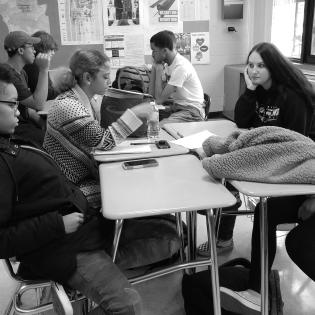Community Needs Assessment Youth Survey
What Do Youth Care About?
A small youth advisory group making decisions about what grants to award at their local community foundation may be able to guess what is important to their peers, but a survey can give timely information about what people from diverse perspectives actually say is most pressing this year.
Some of the pressing issues of the past years have included mental health, stress issues, cyberbullying, body image, and substance abuse.
Use this guide to plan a needs assessment. This should be completed about every three years to remain relevant. This Community Needs Assessment paper provides greater detail on the purpose and process.
Set the Purpose
Discuss:
- What is a needs assessment?
- Why do we do this as youth philanthropists?
Get YAC Perspective on the Process
Young people are the best source of understanding the issues they care about and the best ways to hear from their peers. They know what works. Brainstorm, discuss, and come to a decision together as a youth group.
Brainstorm what we can do with the results.
Examples:
- Determine grantmaking priorities
- Make a presentation to raise awareness in the community or at the foundation
- Make a video to raise awareness of the issue on social media
- Present at a school assembly
- Inform proactive grantmaking (see notes below)
Brainstorm effective ways to gather peer information.
Examples:
- Have structured conversations across the community
- Distribute an online survey
- Distribute a paper survey
- Conduct interviews at an event
- Get information through educators
Brainstorm what information is needed.
Examples:
- Information about the survey participant age, region, and experience level
- List of issue areas and rating scale
Discuss practices to watch out for.
Examples:
- Confidentiality
- Asking people outside our audience
- Asking closed, yes/no questions
- Making a survey too long or with a clear bias
Plan the Needs Assessment
The youth group plans the needs assessment survey with input from experts on process, tools, resources, and legal issues, as needed. Below is a sample procedure for planning the needs assessment.
1. Meet in small groups, each group with a different role.
Examples of different discussion groups:
- Survey content - write draft instructions/questions/categories for the survey to determine the issues youth care about
- Distribution plan - propose a survey format and survey tools, develop draft language that describes and engages participants on the survey and in communications
- Implementation plan - draft a timeline, propose how to distribute, determine who does what to get it in the hands of diverse youth, how to get results back
- Gathering data - process for combining all responses and putting in usable format, propose how to use it for grantmaking and the community
- Evaluation plan - propose a plan to interpret and use the collected data for the intended purpose
2. Discuss and come to consensus about the plan.
- Each group presents their discussion and initial plan.
- They give each group feedback.
- Discuss how to bring the plans together.
- Work in groups to edit the questions and make final changes to the plans.
- Decide who does what.
- Implement the Plans!
3. Use the survey findings to inform grantmaking and share findings with the community.
Notes on Proactive Grantmaking:
A proactive model is when foundations take a proactive stance and either seek out the organizations or programs they want to fund or develop their own initiatives. This can be a model for systems change based on a needs assessment rather than simply reacting to the grant proposals that come to them. Proactive foundations may issue an RFP to solicit proposals targeting the change they seek.
There are three steps to remember when making a proactive grant.
- The first one is focus: select a focus for your grants based on the needs assessment.
- The next step is to convene: bring together existing groups to take action and share ownership of a project.
- The last step is to initiate: the YAC should make grants to the best group that it determines can complete a program to hit the focus they have identified.
Proactive grantmaking allows a YAC to act on the results of their needs assessment. A YAC can initiate and fund a program to help an issue that was ranked very high. Proactive grantmaking demonstrates the creativity and flexibility of youth grantmakers!
